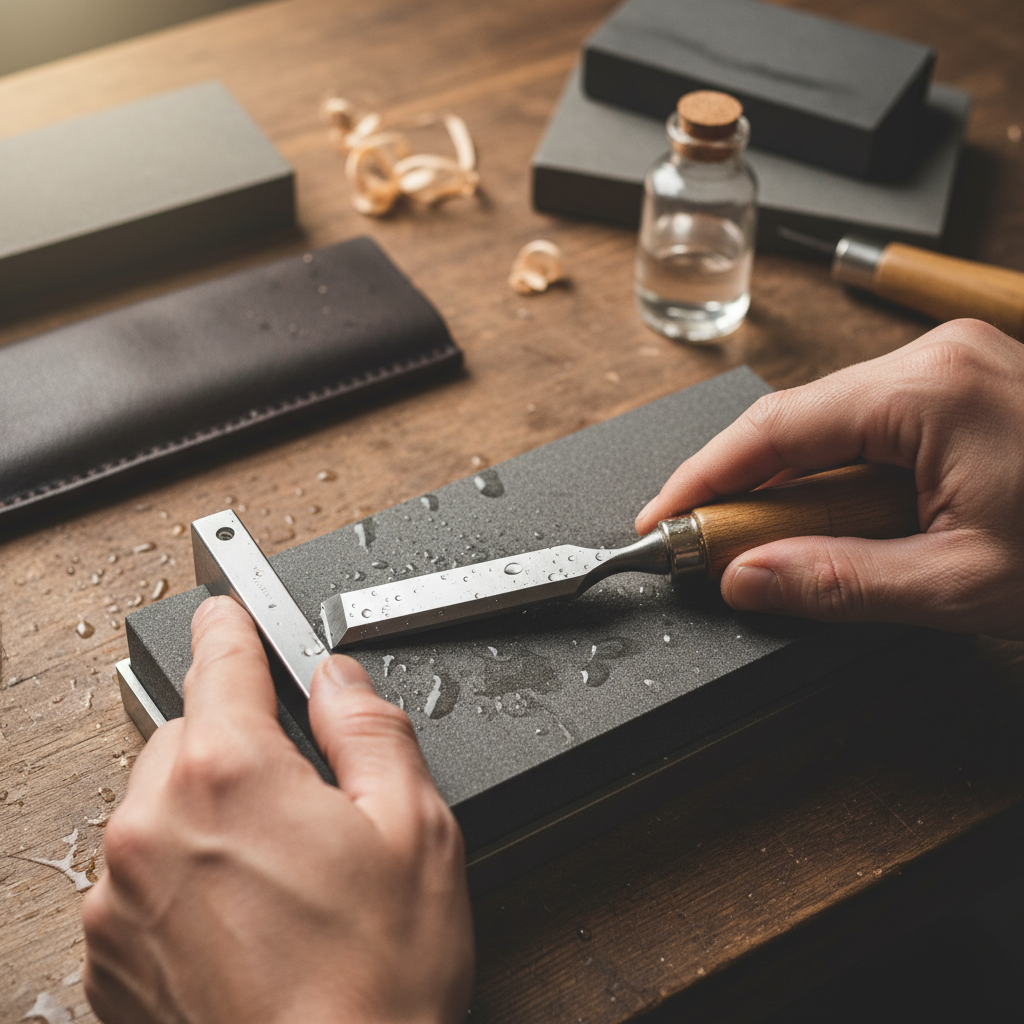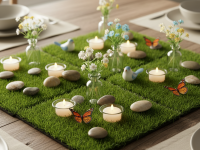Ever felt that soul-crushing moment when your wood carving chisel, once a precise extension of your artistic vision, now just tears at the wood, slips, and leaves a ragged mess? Or worse, slips and nicks your finger? Trust me, I’ve been there. That dull ache of frustration, the wasted effort, and the compromised artwork – it’s all too familiar.
But what if I told you that achieving a razor-sharp edge on your carving chisels isn’t some arcane secret reserved for seasoned masters? What if it’s a skill you can absolutely learn, master, and integrate into your carving routine, transforming your experience from frustrating to incredibly fulfilling?
Welcome, fellow wood whisperer! In this guide, we’re not just going to sharpen a chisel; we’re going to unlock its true potential. We’ll delve into the ‘why’ and ‘how’ of professional-level sharpening, sharing insights gleaned from countless hours at the sharpening bench. By the end of this, you’ll not only know *how* to sharpen your chisels like a pro, but you’ll *understand* the process, allowing you to maintain that pristine edge with confidence and ease. Get ready to carve like you’ve always dreamed!
Why a Sharp Chisel Isn’t Just “Nice to Have” – It’s Essential
Before we dive into the nitty-gritty of grits and angles, let’s underscore why sharpness isn’t a luxury, but a fundamental requirement for any serious wood carver.
-
Safety First, Always!
This might sound counter-intuitive, but a dull tool is far more dangerous than a sharp one. A dull chisel requires excessive force to push through wood. When it finally gives, that stored energy can send your hand – and the tool – flying in unpredictable directions, often right towards your other hand. A sharp chisel, on the other hand, slices through wood with minimal effort, giving you superior control and significantly reducing the risk of slips and injuries. I learned this the hard way, and I urge you not to repeat my mistakes.
-
Unparalleled Control & Precision
Think about trying to cut a tomato with a blunt knife versus a sharp one. The blunt knife squishes and tears; the sharp one glides cleanly. It’s the same with wood. A truly sharp chisel allows you to make clean, precise cuts, execute fine details, and remove material exactly where you want it. This translates directly into higher quality carvings and a more enjoyable creative process.
-
Effortless Efficiency
Working with sharp tools is simply faster and less physically demanding. You’ll spend less time wrestling with stubborn wood and more time enjoying the meditative flow of carving. Your arms and hands will thank you!
-
Longevity of Your Tools and Your Craft
When you force a dull chisel, you put undue stress on the cutting edge, potentially damaging it. Regular, proper sharpening actually prolongs the life of your tools by maintaining their integrity. Plus, consistently working with sharp tools improves your technique, making you a better carver overall.
Understanding Your Chisel’s Anatomy (The Basics You Need to Know)
To sharpen effectively, you need to understand the parts of your chisel that contribute to its cutting ability. While we’ll focus primarily on flat chisels for this guide, the principles apply broadly to gouges and V-tools too.
-
The Bevel
This is the angled surface that tapers down to the cutting edge. Most carving chisels have a single bevel. Maintaining the correct angle of this bevel is crucial for how the tool performs.
-
The Flat Back
Equally important, and often overlooked, is the perfectly flat back of the chisel. Any imperfections here will prevent you from achieving a truly sharp edge, as it’s the reference surface against which the bevel is ground.
-
The Cutting Edge
This is where the bevel and the flat back meet. Our goal is to make this intersection incredibly thin and uniform – razor sharp, in fact!
The Arsenal: What You’ll Need for Pro-Level Sharpening
You don’t need a factory full of equipment, but a few key items will make your sharpening journey much smoother and more effective.
-
Sharpening Stones/Plates
These are the heart of your sharpening kit. You’ll need a progression of grits:
- Coarse Grit (100-400): For repairing chips, establishing a new bevel, or quickly removing a lot of material. I personally use a diamond plate for this due to its durability and flatness.
- Medium Grit (800-2000): Your workhorse stone for general sharpening and removing the scratches left by coarser grits. Waterstones are fantastic here for their speed and effectiveness.
- Fine Grit (4000-8000+): For refining the edge and bringing it to a keen, polished finish. This is where the magic really starts to happen.
Diamond plates are durable, stay flat, and work with water. Waterstones cut very fast, create a slurry that aids cutting, but need flattening periodically. Oilstones are slower, but durable and require oil. For wood carving tools, I strongly lean towards diamond plates (for coarse) and waterstones (for medium to fine) for their efficiency and excellent results.
-
Stropping Compound & Leather Strop
This is the secret weapon for taking your edge from “very sharp” to “hair-shaving sharp.” A leather strop with a honing compound (like green chromium oxide) removes microscopic burrs and polishes the edge to perfection.
-
Honing Guide (Optional, but Highly Recommended)
Especially for begiers, a honing guide ensures you maintain a consistent angle throughout the sharpening process. It takes the guesswork out of freehand sharpening and builds muscle memory. Even experienced carvers like myself often use one for consistency on flat chisels.
-
Water/Oil
Depending on your stones, you’ll need water (for waterstones and diamond plates) or honing oil (for oilstones). This acts as a lubricant and helps float away metal particles, preventing clogging.
-
Rag/Paper Towels
To wipe away slurry and keep your tools and workspace clean.
-
Magnifier (Optional)
A small jeweler’s loupe or magnifying glass (10x-30x) can be incredibly helpful for inspecting your edge and ensuring you’ve removed burrs.
The Sharpening Journey: Step-by-Step to a Razor Edge
Alright, let’s roll up our sleeves and get those chisels singing!
Step 1: Flattening the Back (The Foundation of Sharpness)
This is, arguably, the most crucial step, and often overlooked. A perfectly flat back is the reference plane for grinding the bevel. Without it, you’ll never achieve a truly sharp, stable edge. Trust me, I spent too many early years struggling with this until I realized its profound importance.
- Start Coarse: Place your coarsest stone (100-400 grit) on a non-slip surface. Apply water if using waterstones/diamond plates.
- Lay it Flat: Lay the back of your chisel completely flat on the stone. Use gentle, even pressure, keeping the entire surface in contact with the stone.
- Grind Away: Move the chisel back and forth in a figure-eight or circular motion, covering the entire surface of the stone. Work from the cutting edge back about an inch or two. You’ll see scratch patterns forming. Keep going until the scratches from the coarse grit are uniform across the desired flat area.
- Progress to Finer Grits: Clean the chisel and move to your medium (800-2000 grit) stone. Repeat the process until the scratches from the coarse grit are completely replaced by finer ones.
- Finish Fine: Finally, move to your fine (4000-8000+ grit) stone. Polish the back until it’s mirror-smooth and reflects light evenly. This smooth surface reduces friction in the wood and helps prevent binding.
How to check: Wipe the back clean and hold it up to the light. Look for a perfectly consistent, reflective surface. Any dull spots indicate areas that haven’t been fully flattened yet.
Step 2: Establishing the Primary Bevel (Getting the Angle Right)
Now that the back is perfect, we focus on the bevel. The angle matters! For most general wood carving chisels, an angle between 20 to 30 degrees is a good starting point. Softer woods or very delicate work might benefit from a slightly shallower angle (e.g., 20-25 degrees), while harder woods or heavy chopping might require a steeper, more robust angle (e.g., 25-30 degrees). My personal sweet spot for most of my carving is usually around 25 degrees.
- Set the Angle: If using a honing guide, secure your chisel in the guide and set it to your desired angle. Most guides have markings or calculators to help with this. If freehanding, practice holding the angle consistently.
- Coarse Grind: Place your chisel (bevel down) on your coarse stone. Apply water. Push the chisel forward, maintaining the angle, using moderate pressure. You’ll see dark slurry forming, indicating metal removal.
- Feel for the Burr: Continue grinding until you can feel a “burr” forming on the *back* side of the chisel along the cutting edge. This microscopic wire edge tells you that you’ve ground all the way to the edge. You can feel it by lightly ruing your fingertip *away* from the edge (never into it!).
Step 3: Refining the Edge with Finer Grits (The Path to Polish)
Once you’ve established the primary bevel and raised a burr on the coarse stone, it’s time to progressively refine that edge.
- Medium Stone: Move to your medium grit stone. Apply water. With the chisel still at the same angle (or in the honing guide), make several passes, pushing forward. Then, flip the chisel over and gently lay the flat back on the stone, making one or two very light passes to knock off the burr. Check for the burr again – it should now be much smaller or completely gone.
- Fine Stone: Repeat the process on your fine grit stone. This time, use much lighter pressure. The goal here is to polish the edge and remove any remaining microscopic scratches from the previous grits. Alternate between bevel and flat back passes until the burr is completely gone and the edge feels incredibly smooth.
How to check: At this stage, your chisel should be able to cleanly slice through a piece of paper held upright. If it tears or snags, you still have a burr or uneven edge.
Step 4: The Micro-Bevel (The Secret to Longevity and Sharpness)
This is a trick many pros use. A micro-bevel is a slightly steeper secondary bevel created at the very tip of the edge. It adds strength to the delicate cutting edge without sacrificing too much sharpness, making it last longer between full sharpening sessions.
- Slightly Increase Angle: On your fine grit stone, very slightly lift the spine of the chisel (or adjust your honing guide by 1-2 degrees steeper).
- Quick Passes: Make just 3-5 very light passes on the bevel side. You are just polishing the very tip.
- One Pass on Back: Flip to the flat back and make one *very* light pass to remove any micro-burr that might have formed.
This micro-bevel creates an incredibly durable and sharp edge that holds up beautifully to carving.
Step 5: Stropping for the Ultimate Finish (The Pro Touch)
Stropping is the final, crucial step that takes your edge from “very sharp” to “insanely sharp.” It removes any remaining microscopic burrs that even your finest stone couldn’t catch and polishes the metal to a mirror finish.
- Apply Compound: If your leather strop doesn’t already have it, apply a small amount of honing compound (e.g., green chromium oxide) to the rough side of the leather.
- Strop the Bevel: Lay the chisel bevel-down on the strop, maintaining the exact angle you used for sharpening (or slightly increase it by a hair for the micro-bevel). Pull the chisel *away* from the cutting edge (never push into it, or you’ll embed the edge into the leather!). Use light pressure.
- Strop the Back: Flip the chisel over and lay the flat back completely flat on the strop. Again, pull *away* from the cutting edge.
- Alternate: Repeat this process, alternating between the bevel and the back, for 10-20 strokes per side. You’ll notice the edge becoming incredibly shiny and reflective.
The Ultimate Test: After stropping, your chisel should effortlessly shave hair from your arm. If it doesn’t, go back to your fine stone for a few passes, then strop again.
Sharpening Gouges and V-Tools (A Quick Note for the Advanced)
While this guide primarily focused on flat chisels, the principles of establishing a bevel, removing burrs, and stropping apply to curved tools too. Gouges and V-tools require specialized slips (small, shaped sharpening stones) or shaped leather strops to sharpen their interior curves and maintain their unique profiles. It’s a bit more advanced and often done freehand, but the core idea remains: use progressively finer abrasives to refine the edge on both the inside and outside of the curve.
Maintenance & Best Practices (Keep That Edge Alive)
Sharpening isn’t a one-and-done deal. It’s an ongoing relationship with your tools.
- Strop Frequently: The best way to maintain a sharp edge is to strop it regularly, even during a carving session. A few quick passes on the strop can revitalize an edge far faster than going back to the stones.
- Protect Your Edges: Store your chisels with edge protectors (cappers) or in a roll. Never let them clatter around in a drawer, as this will quickly dull or chip the edge.
- Cleanliness: Keep your stones and chisels clean. Metal particles and dirt can hinder sharpening.
- Listen to Your Tools: Your tools will tell you when they need attention. If you feel resistance, tearing, or a loss of control, it’s time for a touch-up.
Conclusion
Sharpening wood carving chisels like a pro isn’t just about following steps; it’s about understanding the synergy between the tool, the abrasive, and your hands. It’s a skill that takes practice, patience, and a keen eye for detail. But let me tell you, the rewards are immense.
The satisfaction of seeing a flawlessly carved surface, the joy of a tool gliding effortlessly through wood, and the increased safety in your workshop are all direct results of a properly sharpened edge. Don’t be intimidated; embrace the process. Start with the basics, practice consistently, and you’ll soon find yourself creating beautiful, precise carvings with confidence and pleasure.
Now, go forth, sharpen those chisels, and let your creativity flow freely, unhindered by dull blades. Happy carving!



